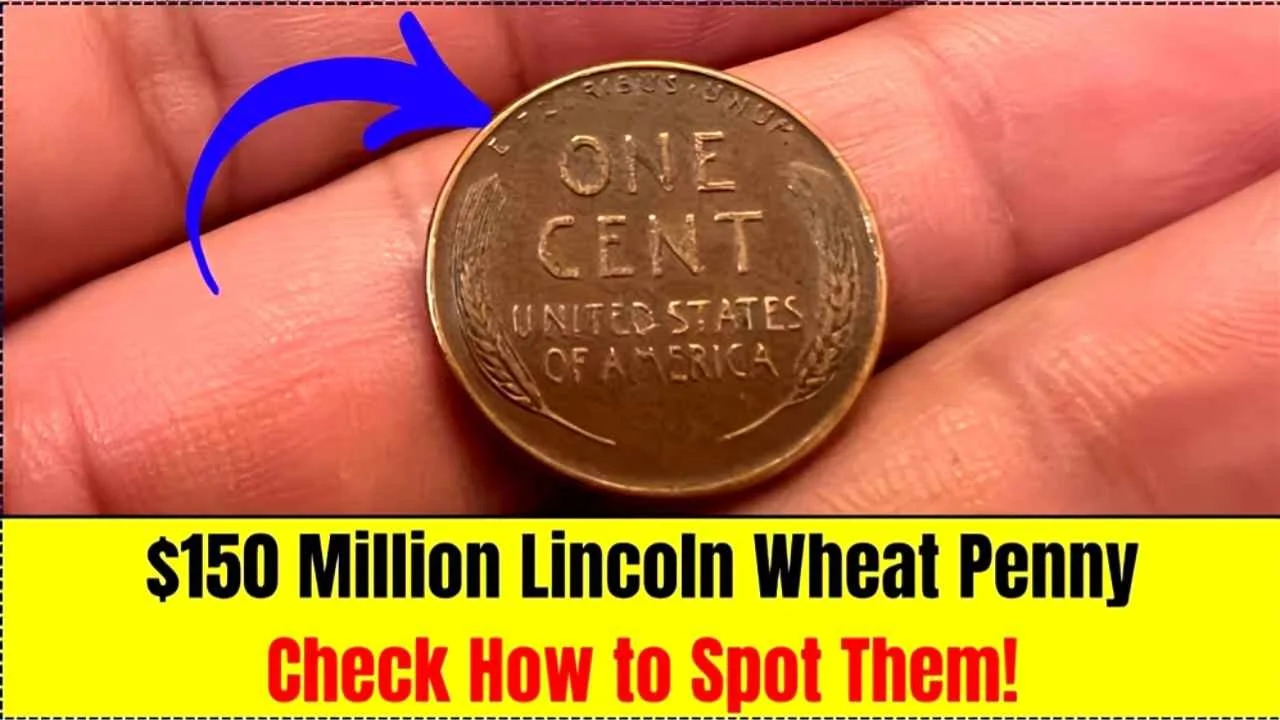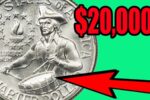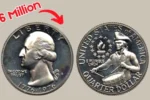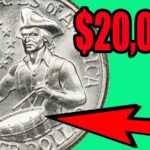The Lincoln Wheat Penny Valued at $150 Million, Still in Circulation
Most people don’t give a second thought to a penny. It’s just one cent, usually left at the bottom of a jar or tossed aside. But what if one of those pennies could be worth $150 million? Yes, you read that right — a Lincoln Wheat Penny, still possibly in circulation, has been valued at an unbelievable amount.
This may sound like a fairy tale, but stories like this are real in the world of coin collecting. A small number of rare coins are so unique that collectors are willing to pay millions, and in this case, one specific Lincoln Wheat Penny has shocked the coin world with its value.
Let’s explore what makes this penny so special, how to recognize it, and what steps to take if you think you might be holding one.
Overview Table: Quick Facts About the $150 Million Lincoln Wheat Penny
| Feature | Description |
|---|---|
| Coin Name | Lincoln Wheat Penny |
| Original Value | $0.01 (1 cent) |
| Year Introduced | 1909 |
| Valuable Variant | Believed to be rare error or prototype coin |
| Estimated Value | $150 million |
| Design | Abraham Lincoln on front, wheat ears on back |
| Key Markings to Watch | “S” or “D” mint marks, rare dates, errors |
| Still in Circulation? | Possibly, though extremely rare |
What Is the Lincoln Wheat Penny?
The Lincoln Wheat Penny, also known as the “Wheat Cent,” was introduced in 1909 to celebrate the 100th birthday of Abraham Lincoln. It became the first U.S. coin to feature a real person. On the front is Lincoln’s portrait, and the back has two simple wheat stalks, symbolizing prosperity and agriculture.
This design was used until 1958, when it was replaced with the Lincoln Memorial design. While most wheat pennies are worth just a few cents to a couple of dollars, some rare editions are worth a fortune — especially if they contain unusual features.
Why Is This Penny Worth $150 Million?
It’s almost hard to believe that a coin worth one cent could be valued at $150 million, but in the world of rare coins, it’s not impossible. Here’s what experts believe makes this particular penny so special:
1. Minting Error or Prototype
This penny is thought to be either a rare error coin or a prototype that was never meant to enter circulation. If true, it would be one-of-a-kind, making it priceless to collectors.
2. Unknown Metal Composition
There’s a chance this coin was struck using a different metal, such as gold or another rare alloy, possibly by mistake or for testing. That would make it not just rare but totally unique.
3. Historical Significance
Because the Lincoln Wheat Penny was the first coin to feature a U.S. president, it already holds historical value. A rare version from this group only increases that worth.
4. Condition
The $150 million coin is believed to be in mint or near-mint condition, meaning no scratches or signs of wear. Collectors and museums will pay much more for coins in perfect shape.
What to Look for in a Rare Lincoln Wheat Penny
If you want to know whether your penny is just ordinary or possibly worth a fortune, here are some signs to check:
✔ Year
-
Look for early years like 1909, 1914, 1922, 1943, and 1955.
-
The 1909-S VDB and 1943 bronze penny are especially rare and valuable.
✔ Mint Mark
-
Found under the date. It could be “S” (San Francisco), “D” (Denver), or no mark (Philadelphia).
-
Some valuable pennies are missing their mint mark entirely due to minting errors.
✔ Metal Color
-
Regular pennies are copper or steel (in 1943).
-
If your penny looks gold, silver, or unusually shiny — it could be something special.
✔ Errors
-
Look for double printing, off-center stamping, or misaligned letters.
-
Even small defects can mean big value in the collector world.
✔ Condition
-
Coins that are worn and scratched are usually worth less.
-
A clean, crisp, shiny penny is more attractive to collectors.
What Should You Do If You Think You Have One?
It can be exciting (and overwhelming) to believe you might be holding a rare coin. Here are the steps you should follow if you come across a Lincoln Wheat Penny that seems unusual:
-
Do Not Spend It
Keep the coin safe. Place it in a soft cloth or coin protector. -
Check It Carefully
Use a magnifying glass and light to inspect the date, mint mark, and any odd features. -
Compare It Online
Look at trusted coin websites to compare your coin with known rare types. -
Take It to a Professional
A certified coin dealer or expert can help identify the coin’s true value. -
Get It Graded
If the coin is rare, send it to a grading service like PCGS or NGC for a full evaluation. A grade can increase the value dramatically.
Frequently Asked Questions (FAQs)
1. Are all Lincoln Wheat Pennies valuable?
No. Most are common and worth just a few cents. Only rare years, minting errors, or unique versions are worth a lot.
2. How do I know if my penny is rare?
Check the date, mint mark, metal type, and look for any unusual printing errors. Rare coins stand out once you know what to look for.
3. Can I find this $150 million penny in my change?
While it’s highly unlikely, it’s not impossible. Some valuable coins do end up in circulation by mistake or are passed down unknowingly.
4. Should I clean the coin before showing it to someone?
No. Never clean a coin, as it can reduce its value. Leave it in its current condition and let an expert evaluate it.
5. Where can I sell a rare penny?
You can go through a coin dealer, a specialty auction, or an online platform like Heritage Auctions or eBay (with proper grading and documentation).
Final Thoughts
Who knew a simple penny could be worth $150 million? The world of coin collecting is full of surprises, and the Lincoln Wheat Penny proves that even the smallest things can have great value. While the chances are slim, this legendary coin may still be floating around — maybe in an old drawer, a jar, or even in your wallet right now.
The next time you come across a penny, especially one with wheat stalks on the back, don’t toss it aside. Take a closer look. It might just be the coin that changes your life.













